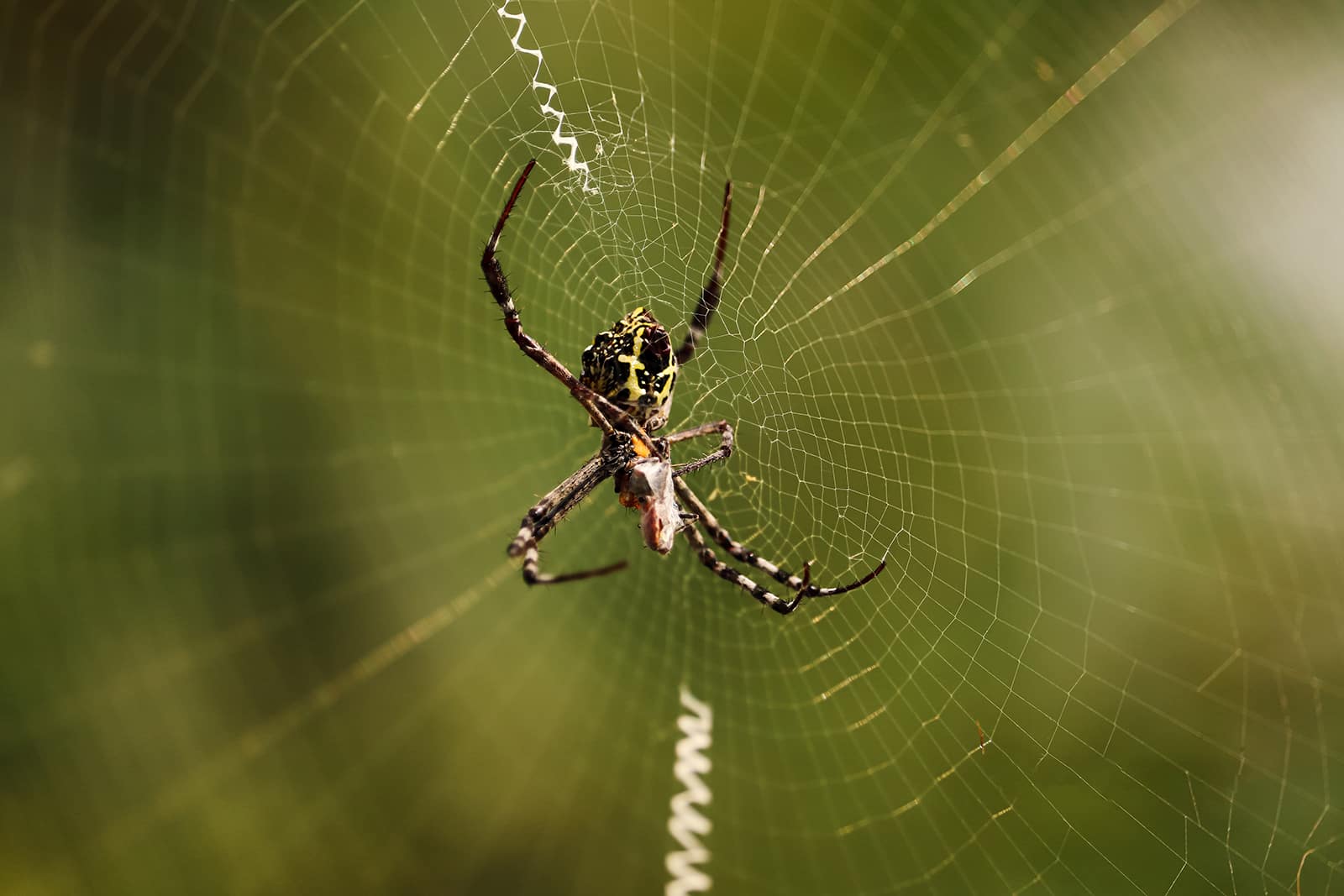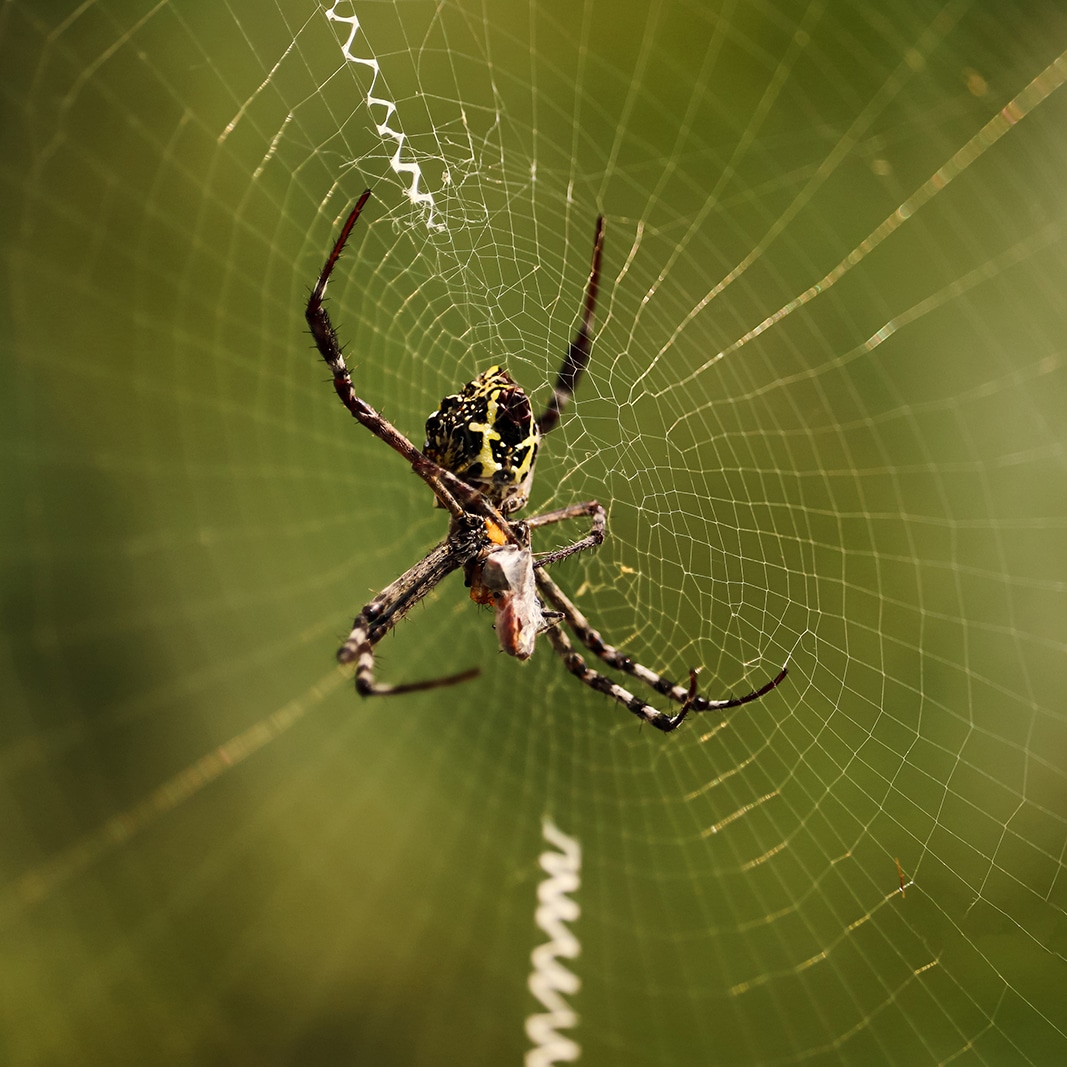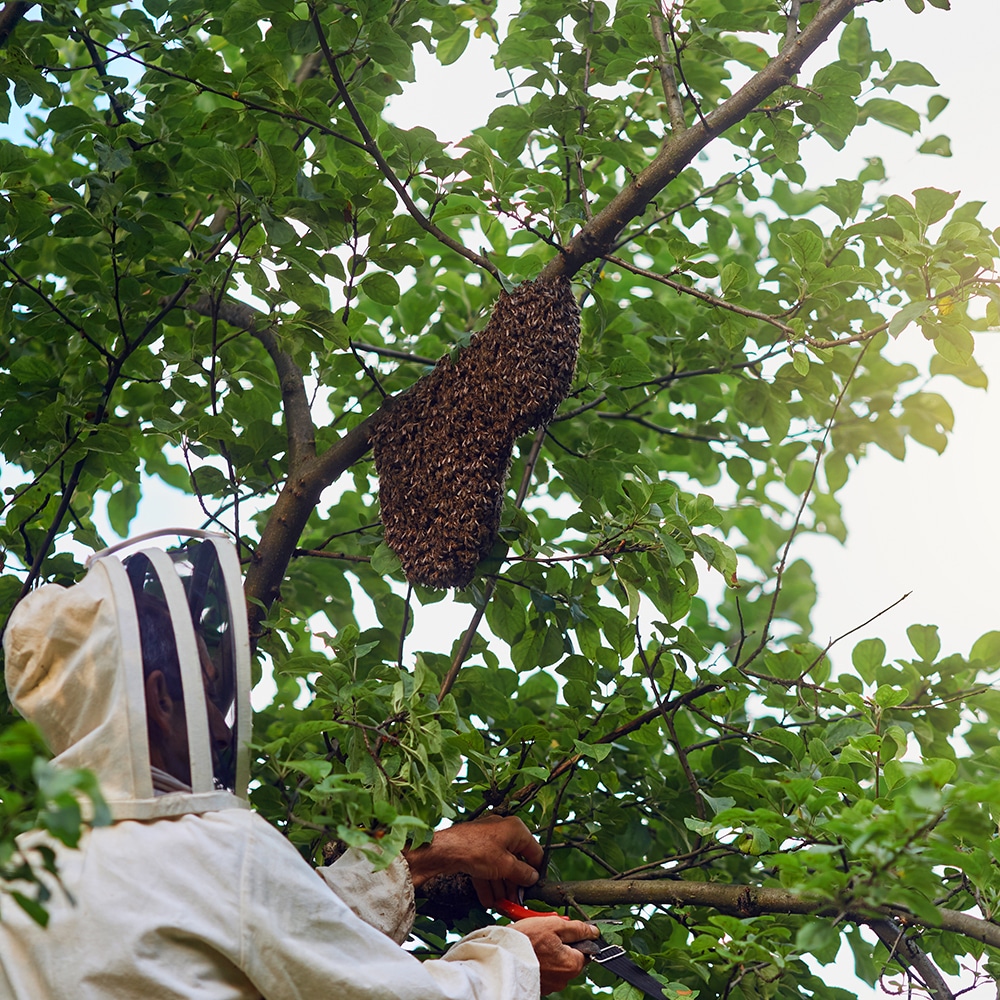
Why Do Spiders Come Back And Why
Why Do Spiders Come Back And Why On The Central Coast NSW. Responsive Proactive Solutions. Detail-focused for lasting results. Call Adam on 0431 222 894
Welcome to our guide on “How to Identify Dangerous Spiders and What to Do”. Living in Central Coast NSW, it’s crucial to know your eight-legged neighbours. At Vital Pest Control, we are passionate about keeping you safe. Let’s dive into how you can spot and deal with these critters.
Common venomous spiders in Australia
Australia is home to some notorious spiders. The redback, funnel web, and white-tailed spiders are the most common venomous types. Each poses unique risks, so understanding their traits is essential for safety.
How to tell if a spider is dangerous
Dangerous spiders often have distinctive markings or aggressive behaviour. Look for red stripes on the abdomen or a quick defensive stance. These signals help identify risk and ensure you stay safe.
What to do if you are bitten by a spider
If a spider bites you, remain calm. Clean the bite with soap and water, apply ice, and seek medical help. Quick action is vital to minimise effects.
First aid for spider bites
For first aid, bandage the area tightly and immobilise the limb if needed. This slows venom spread. Consult health professionals immediately for guidance.
Where do venomous spiders hide
Venomous spiders love dark, quiet spots. Sheds, garages, and garden debris are favourite hideouts. Regular cleaning reduces the likelihood of encountering these creatures.
How to identify redback spiders
Redbacks have a distinctive red stripe on their back. They prefer warm, sheltered locations. Recognising their web and appearance prevents unexpected encounters.
How to tell the difference between a funnel web and a trapdoor spider
Funnel webs are large, aggressive, and have shiny, dark bodies. Trapdoor spiders are less aggressive, with a more subdued appearance. Knowing these differences aids proper identification.
Are white tailed spiders dangerous
White tailed spiders are not as feared as other species. However, they can still cause discomfort. Awareness and caution help avoid unpleasant experiences.
Discover how we can help you today! Visit our Contact page to learn more.

Australia is home to a variety of venomous spiders, each with its own distinct traits and potential dangers. Central Coast NSW, in particular, hosts several of these arachnids. Knowing how to identify them is vital for ensuring safety and prompt action if encountered. This guide will help you understand the common venomous spiders in the area and what to do if you come across them.
Redback Spider
The Redback spider is notorious in Australia, easily identified by the red stripe on its back. These spiders often dwell in dry, sheltered areas like sheds and mailboxes. Their venom can cause severe pain and other symptoms, so it’s crucial to seek medical attention if bitten. Keeping outdoor areas clean and clutter-free can help deter them.
Funnel-Web Spider
Funnel-web spiders are among the most dangerous in the world. They are mainly found in burrows or under rocks and logs. Identified by their shiny black bodies, funnel-webs are aggressive when threatened. Immediate medical care is necessary if bitten, as their venom is highly toxic. Professional pest control can effectively manage their presence.
White-Tailed Spider
White-tailed spiders are commonly found indoors, especially in clothing and towels. They have a distinctive white tip on their abdomen. While their bites are not usually life-threatening, they can cause discomfort and potential skin irritation. Regularly checking and shaking out clothes can prevent encounters.
Spiders can be both fascinating and frightening, especially when you’re unsure if they’re a threat. On the Central Coast of NSW, it’s crucial to know how to identify potentially dangerous spiders. This guide will help you distinguish between harmless and harmful spiders, ensuring safety for you and your family.
Observe the Spider’s Colour and Markings
One of the first things to examine is the spider’s colour and any distinct markings. Dangerous spiders like the Redback often have bright, recognisable features. The Redback, for example, sports a prominent red stripe on its back. Familiarising yourself with these markings can quickly help you spot a potential threat.
Check the Size and Shape
Size and body shape can also give clues. Funnel-web spiders, known for their dangerous bite, have a robust, shiny body. They’re usually larger than other spiders around the home. Knowing these physical traits can be useful in making a quick assessment of the spider’s danger level.
Assess Behaviour and Web Structure
Behaviour and web structure may also indicate danger. Aggressive spiders like the Funnel-web will rear up when threatened. Additionally, their webs are often funnel-shaped and found in sheltered locations. Observing these behaviours and structures can help you decide whether a spider poses a risk.
Identifying dangerous spiders doesn’t have to be daunting. By observing their colour, size, and behaviour, you can take informed steps to protect your household. If in doubt, contact Vital Pest Control for expert advice and assistance.
If you’re bitten by a spider on the Central Coast NSW, staying calm is crucial. Though most spider bites are harmless, some can cause significant reactions. Knowing the steps to take can help you manage the situation effectively.
Identify the Bite
Assess the bite area carefully. Look for redness, swelling, or pain. If a spider is nearby, try to identify it without provoking it further. Knowing the type of spider can be helpful for medical professionals in determining treatment. In Australia, the redback and funnel-web spiders are particularly concerning.
First Aid Measures
Wash the bite site with soap and water to reduce the risk of infection. Apply a cold pack to manage swelling and pain. If the bite is on a limb, keep it elevated and still. For suspected funnel-web bites, use a pressure immobilisation bandage and seek immediate medical assistance.
Seek Medical Attention
Monitor for severe symptoms like difficulty breathing, severe pain, or muscle spasms. These require urgent medical care. Contact emergency services or visit a hospital. Even if symptoms seem mild, consult a healthcare provider for advice, especially if you suspect a bite from a dangerous spider.
Prevention Tips
To avoid future bites, wear gloves when gardening and shake out shoes and clothing before use. Regularly check and clean areas where spiders might hide, such as sheds and garages. Engaging a pest control service can help manage spider populations around your home.
On the Central Coast of NSW, encountering spiders is a common occurrence. Some of these spiders are harmless, but others can pose a significant threat. Knowing how to administer first aid for spider bites can make a critical difference. This practical guide will help you deal with spider bites effectively.
Recognising the Symptoms
Understanding the symptoms is the first step in handling spider bites. Typical signs include redness, swelling, and pain at the bite site. In more severe cases, you might experience nausea, headaches, or muscle cramps. If any of these symptoms appear, it’s crucial to act quickly.
Immediate First Aid Steps
Begin by washing the bite area with soap and water to prevent infection. Apply a cold pack to reduce swelling and ease pain. Keep the affected limb elevated and still to slow the spread of venom. Remember, applying a tourniquet is not recommended.
When to Seek Medical Help
If symptoms worsen or if the person bitten experiences difficulty breathing, chest pain, or severe swelling, seek medical attention immediately. It’s important to identify the spider if possible, as this information can assist healthcare professionals in providing the right treatment.
With the right knowledge and swift actions, managing spider bites becomes less daunting. At Vital Pest Control, we’re committed to helping Central Coast residents stay safe and informed.
Venomous spiders can be a real concern for residents on the Central Coast, NSW. These eight-legged creatures often hide in places you might not expect, making it essential to know where to look. Understanding their preferred hiding spots can help you avoid unpleasant encounters and keep your home safe.
Dark and Undisturbed Corners
Spiders often choose dark, secluded areas as their homes. Basements, attics, and garages are popular spots, where clutter provides ample hiding places. Shelves filled with old boxes or unused items can be particularly attractive to these creatures. Regularly cleaning and organising these spaces can help reduce the risk of spider infestations.
Outdoor Sheds and Garden Areas
Venomous spiders also find outdoor sheds and gardens appealing. These areas offer plenty of hiding spots among garden tools, pots, and plant debris. Regularly inspecting and tidying these spaces can deter spiders from setting up shop. Wearing gloves while gardening adds an extra layer of protection.
Inside Shoes and Clothing
It might surprise you, but shoes and clothing left on the floor are inviting to spiders. They crawl inside seeking warmth and shelter. Always shake out shoes and clothes before wearing them, especially if they’ve been sitting around for a while. This simple habit can prevent unwanted bites.
On the Central Coast of NSW, identifying redback spiders is crucial for safety. These notorious spiders, known for their venomous bite, can be found in various locations, including gardens, sheds, and even indoor areas. Understanding their appearance and behaviour helps in preventing unwanted encounters.
Appearance
Redback spiders are distinctive due to their black bodies with a prominent red stripe on the upper abdomen. Females, the more dangerous of the species, are larger, with a body length of up to 10 millimetres. Males are usually smaller and less vivid, often overlooked. The red stripe isn’t always bright, sometimes appearing orange or fading with age.
Habitat
These spiders prefer dry, sheltered spaces to create their tangled webs. Look for them in mailboxes, under outdoor furniture, and around rubbish bins. They thrive in urban areas, making their webs in areas where human activity provides food sources like insects.
Behaviour
Redback spiders are not aggressive and usually bite only when disturbed. Their bites can cause serious discomfort and require medical attention. Knowing their common hiding spots and recognising their webs can help in avoiding accidental contact.
Understanding redback spiders is essential for safety and peace of mind on the Central Coast. Regular pest control checks can help manage their presence effectively.
Knowing how to tell a funnel web spider from a trapdoor spider is crucial for Central Coast NSW residents. While both spiders are common, their behaviours and dangers vary significantly. Understanding these differences can help you identify potential threats and take appropriate action.
Physical Characteristics
Funnel web spiders typically have a glossy black or dark brown body, with a robust build and a leg span of up to 5 centimetres. Their fangs are powerful and visible. In contrast, trapdoor spiders are generally brown and less glossy, with a more subdued appearance. They have a smaller leg span, often around 3 centimetres, and their fangs are less prominent.
Habitat and Behaviour
Funnel web spiders prefer moist environments like gardens or under logs, creating silk-lined burrows with funnel-shaped entrances. They are aggressive, especially when provoked. Trapdoor spiders build burrows with a cork-like lid, often located in drier areas. They are less aggressive and are mostly nocturnal, waiting for prey to pass by their trap.
Venom and Risks
The funnel web spider is highly venomous and poses a significant risk to humans. Immediate medical attention is essential if bitten. Trapdoor spider bites, while painful, are not life-threatening. They rarely require medical intervention. Understanding these risk levels helps in managing encounters with these spiders effectively.
White-tailed spiders are often mentioned in conversations about spider bites in Australia. Found primarily on the Central Coast NSW, these spiders are feared by many due to sensational stories about their bites causing severe reactions. However, understanding their true nature and the actual level of danger they present is crucial for residents and pest control efforts.
Identifying White-Tailed Spiders
White-tailed spiders are medium-sized, with a distinctive white tip at the end of their abdomen. They typically inhabit gardens and homes, preferring dark and cool environments. While their appearance may seem alarming, these spiders are usually more interested in hunting other spiders than interacting with humans. Recognising their distinctive features helps in reducing unnecessary panic.
Assessing the Danger
Despite their fearsome reputation, white-tailed spiders are not considered highly dangerous. Most bites result in minor symptoms like mild pain or skin irritation. Severe reactions are rare and often not directly attributed to the spider itself. Addressing myths surrounding their bites helps in managing fears effectively.
Effective Pest Management
For those concerned about white-tailed spiders, regular pest control measures can help minimise their presence. Keeping homes clean and clutter-free, sealing entry points, and regular inspections by professionals like Vital Pest Control ensure any potential spider issues are addressed promptly. Taking proactive steps aids in maintaining a safe home environment.
On the Central Coast of NSW, encountering venomous spiders like the funnel-web or redback can be unsettling. While it’s crucial to remain calm, knowing how to safely remove these spiders is essential for preserving both your safety and the ecosystem.
Preparation and Safety
Before you attempt to remove a venomous spider, gather necessary tools like a jar with a secure lid, a piece of stiff paper, and gloves. Ensure the area is well-lit, allowing you to clearly see the spider’s movements. Wearing gloves adds a layer of protection, as it minimises direct skin contact.
Capturing the Spider
Approach the spider slowly to avoid startling it. Gently place the jar over the spider, ensuring it’s completely enclosed. Slide the paper underneath the jar, creating a barrier between the spider and the surface. This method is effective in safely containing the spider without causing harm.
Relocating the Spider
Once captured, carefully carry the jar outside to a safe distance from your home. Release the spider in a suitable habitat, like a garden or bushland, where it can thrive without posing a threat. Always ensure the environment is conducive to the spider’s needs, maintaining balance in nature.
Venomous spiders can be a concern for residents on the Central Coast, NSW. Understanding what draws these spiders into homes is crucial for effective pest control. By identifying specific factors that attract venomous spiders, homeowners can take proactive steps to minimise their presence.
Seeking Shelter and Warmth
Spiders often enter homes seeking shelter, especially during cooler months. Warm, undisturbed places like basements, attics, and crawl spaces offer ideal conditions. They look for cracks, crevices, and other entry points to escape the harsh outdoor environment. Ensuring these areas are sealed and clutter-free can make them less appealing.
Abundance of Prey
Venomous spiders are drawn to areas with a steady food supply. Homes with insect infestations provide a buffet for spiders. They prey on flies, ants, and other insects, making pest control critical. Regularly cleaning and maintaining the home can reduce the insect population, thus decreasing spider interest.
Moisture and Humidity
Spiders thrive in moist environments. Leaky pipes, damp basements, and humid bathrooms create favourable conditions. Addressing moisture issues by fixing leaks and using dehumidifiers can deter spiders. Reducing humidity levels not only helps with spider control but also benefits overall home maintenance.
Spiders can be an unwelcome guest in any home, especially on the Central Coast of NSW. While most spiders are harmless, preventing bites is crucial for a safe living environment. Understanding how to keep these critters at bay can give you peace of mind.
Keep Your Home Clean and Clutter-Free
Spiders love cluttered spaces where they can hide and build their webs. Regularly vacuuming and dusting corners, under furniture, and other hidden spots can deter them. Declutter storage areas and keep items off the floor to minimise hiding places for spiders.
Seal Entry Points
Spiders often enter homes through cracks, gaps, and open windows. Inspect your home for potential entry points and seal them with caulk or weather stripping. Use fine mesh screens on windows and doors to keep spiders out while allowing fresh air in.
Reduce Outdoor Attractants
Spiders are attracted to outdoor lights as they draw in insects. Use yellow or sodium vapour lights, which attract fewer bugs. Keep outdoor vegetation trimmed and away from the house, as these can be breeding grounds for spiders and their prey.
Use Natural Repellents
Essential oils like peppermint, tea tree, and eucalyptus can deter spiders. Mix a few drops with water in a spray bottle and apply to windowsills, door frames, and other entry points. The strong scent can be off-putting for spiders, keeping them at bay.
Spiders often provoke fear, especially large ones. On the Central Coast of NSW, understanding which spiders pose a threat is crucial for effective pest control. Not all large spiders are dangerous, but knowing the difference can ensure safety and peace of mind.
Common Large Spiders
The Huntsman spider is one of the most common large spiders found in NSW. Despite its intimidating size, it’s generally harmless to humans. Huntsman spiders help control insect populations, making them beneficial in gardens and homes. Their bites are rare and cause only minor irritation.
Identifying Dangerous Spiders
While large spiders like the Huntsman are not dangerous, other spiders like the Funnel-web and Redback are. These spiders are smaller but can be lethal. Recognising these spiders is vital. Funnel-web spiders have a glossy, dark appearance and are aggressive when threatened. Redbacks have a distinctive red stripe on their abdomen, making them easier to identify and avoid.
What to Do if You Encounter a Large Spider
If you spot a large spider, observe its behaviour. Most will retreat if left alone. For safety, contact Vital Pest Control on the Central Coast NSW for professional assistance. Our team can help identify and manage any spider concerns, ensuring your home remains a safe haven.
Living on the Central Coast NSW means sharing your environment with a variety of spiders. While some are harmless, others can pose serious risks. Knowing when to call a professional for spider removal is crucial for maintaining a safe home.
Signs of a Dangerous Infestation
If you notice an increase in spider webs, especially those with thick, funnel-like structures, it may indicate a dangerous infestation. Spiders like the funnel-web or redback are known for their potent venom. A sudden surge in these webs should prompt you to seek expert help to assess and handle the situation effectively.
Repeated Spider Sightings
Seeing spiders occasionally is normal, but frequent encounters can suggest a growing problem. If you regularly find spiders indoors, especially in dim or damp areas, it’s wise to contact a pest control service. This proactive step can prevent potential bites and ensure your family’s safety.
Presence of Egg Sacs
Discovering egg sacs around your home could mean a future surge in the spider population. These sacs can hatch dozens of young spiders, quickly escalating the problem. Professional removal at this stage can prevent a larger, more challenging infestation later.
Peace of Mind and Safety
Even if you’re unsure about the species, the presence of spiders can be unsettling. Engaging a professional guarantees thorough removal and offers peace of mind. Expert pest control ensures your home remains safe and spider-free, allowing you to relax without worry.
Spider bites can be a common concern in the Central Coast NSW region. Knowing how long these bites take to heal is important for anyone looking to manage symptoms effectively. While most spider bites aren’t dangerous, they can still cause discomfort and worry. Understanding the healing timeline can help ease these concerns.
Typical Healing Time for Spider Bites
Most spider bites heal within a week. Mild bites may clear up in just a few days, while others might take longer, depending on the individual’s skin response and the type of spider involved. Keeping the bite clean and avoiding scratching can speed up recovery.
Factors Influencing Healing
Several factors affect how quickly a spider bite heals. The spider species, the individual’s skin sensitivity, and how quickly treatment begins play roles. More sensitive skin might result in longer recovery times, especially if the bite causes an allergic reaction.
When to Seek Medical Attention
While most bites heal without medical intervention, some may require professional care. If symptoms worsen or if the bite area becomes increasingly painful, seeking help from a healthcare provider is wise. In rare cases, bites from dangerous spiders like the redback or funnel-web need immediate treatment.
Spider infestations can be a real concern, especially in high-risk areas. On the Central Coast of NSW, it’s vital to adopt effective spider-proofing methods to ensure safety and comfort. By focusing on prevention, you can keep unwanted arachnids at bay.
Seal Entry Points
Spiders sneak in through tiny gaps and cracks. Inspect your home for potential entry points, paying close attention to windows, doors, and foundations. Use caulk or weather stripping to seal any openings. Regular maintenance can prevent spiders from finding their way inside.
Keep the Outdoors Tidy
Cluttered outdoor spaces create a haven for spiders. Clear away debris, wood piles, and overgrown plants near your home. Maintain a clean and tidy garden to discourage spiders from settling. Trim bushes and keep grass short to reduce potential habitats.
Use Natural Repellents
Natural repellents can be a spider deterrent. Essential oils like peppermint or eucalyptus can be sprayed around the home. These oils are unpleasant to spiders but safe for humans and pets. Regular application can keep spiders at bay without harsh chemicals.
Install Screens
Installing screens on windows and doors can create a barrier against spiders. Ensure screens are intact and free from holes. This simple measure can significantly reduce the chances of spiders entering your home, offering peace of mind.
Please leave your details in the form and we will call you back the same day.
So that we can process your enquire efficiently please leave as many details as possible and upload any relevant images. (.jpg and .png format)

Why Do Spiders Come Back And Why On The Central Coast NSW. Responsive Proactive Solutions. Detail-focused for lasting results. Call Adam on 0431 222 894

Building a Long Term Residential Pest Protection Plan For Home Owners On The Central Coast NSW. Responsive Proactive Solutions. Detail-focused for lasting results. Call Adam on 0431 222 894

How to Protect Your Home from Wasp Infestations On The Central Coast NSW. Responsive Proactive Solutions. Detail-focused for lasting results. Call Adam on 0431 222 894